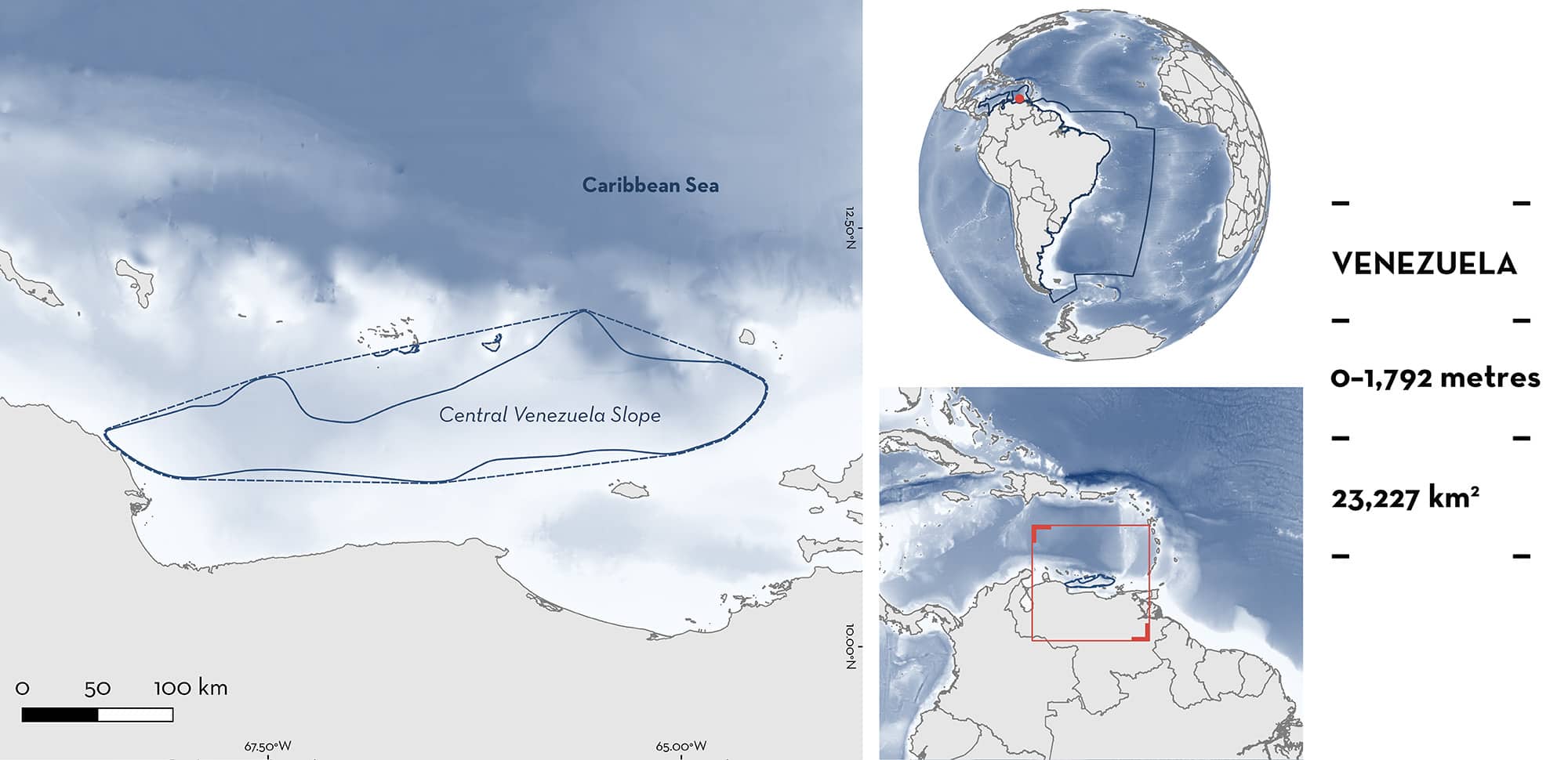ISRA FACTSHEETS
ISRA FACTSHEETS
SOUTH AMERICAN ATLANTIC REGION
Central Venezuela Slope
Summary
Central Venezuela Slope is located off the central coast of Venezuela. This offshore area lies between the continental shelf in the south and a chain of islands in the north. It comprises mostly shelf slope waters, with escarpments and canyons in the northeast. The habitat is characterised by pelagic waters. The area is influenced by the westward Caribbean Current. Within this area there are: threatened species (e.g., Night Shark Carcharhinus signatus) and reproductive areas (e.g., Blue Shark Prionace glauca).
Download factsheet
Central Venezuela Slope
DESCRIPTION OF HABITAT
Central Venezuela Slope is located off the central coast of Venezuela. The area lies mostly off the continental shelf on the slope that extends north to a chain of islands on the Lesser Antilles Ridge which include Los Roques Archipelago and Orchila Island, among others. It comprises escarpments and canyons in the northeast of the area. The habitat is characterised by pelagic waters. The area is influenced by the westward flow of the Caribbean Current (Chérubin & Richardson 2007).
This Important Shark and Ray Area is pelagic and is delineated from surface waters (0 m) to 1,792 m based on the global depth range of the Qualifying Species.
CRITERION A
VULNERABILITY
Two Qualifying Species considered threatened with extinction according to the IUCN Red List of Threatened Species regularly occur in the area. These are the Endangered Night Shark (Carlson et al. 2021) and the Vulnerable Blue Shark (as per national Red List of Venezuela; Tavares 2015).
CRITERION C
SUB-CRITERION C1 – REPRODUCTIVE AREAS
Central Venezuela Slope is an important reproductive area for two shark species.
Pregnant Night Sharks and Blue Sharks are regularly captured in this area (Tavares 2005; Arocha et al. 2023). A historical study collected data from the industrial longline fishery targeting swordfish and tuna during 1994–2003 (Tavares 2005).
Night Sharks (n = 524) were the second-most captured shark species (24% of total catch). Of the 172 females, over three-quarters (n = 133; 77%) were pregnant (Tavares 2005). Embryos were mainly in the initial and intermediate developmental stages and, combined with the high proportion of males, this indicates that the area is important for gestation as well as potentially for mating (Tavares 2005). Pregnant females were also captured outside the area, but their hotspot was within this area (Tavares 2005). Detailed contemporary demographic data are lacking, but the billfish fishery off Venezuela’s central coast surveyed in 2012–2013 reported that Night Sharks are still captured in large numbers (Marcano et al. 2015).
Blue Sharks (n = 904, 46% females) were the most captured shark species (35% of total catch) and 99 (24% of females) were pregnant (Tavares 2005). They had between 10–60 embryos, with most in intermediate (59%) and advanced (30%) developmental states. Pregnant Blue Sharks were mainly captured in this area compared to further afield in the Atlantic Ocean (Tavares 2005). Contemporary data from the industrial longline fishery (2012–2022) indicate that Blue Sharks are still captured in this area (Arocha et al. 2023). Although detailed demographic data are lacking, the size distribution for Blue Sharks appears to be similar to that reported previously (Tavares 2005; Arocha et al. 2023), suggesting that their population structure has experienced few changes over the past 25 years. For example, there is still about an even sex ratio and a high proportion of mature individuals among the females (~65%) in the contemporary catches (Arocha et al. 2023), suggesting that many pregnant individuals are still captured.
Download factsheet
SUBMIT A REQUEST
ISRA SPATIAL LAYER REQUEST
To make a request to download the ISRA Layer in either a GIS compatible Shapefile (.shp) or Google Earth compatible Keyhole Markup Language Zipped file (.kmz) please complete the following form. We will review your request and send the download details to you. We will endeavor to send you the requested files as soon as we can. However, please note that this is not an automated process, and before requests are responded to, they undergo internal review and authorization. As such, requests normally take 5–10 working days to process.
Should you have questions about the data or process, please do not hesitate to contact us.


